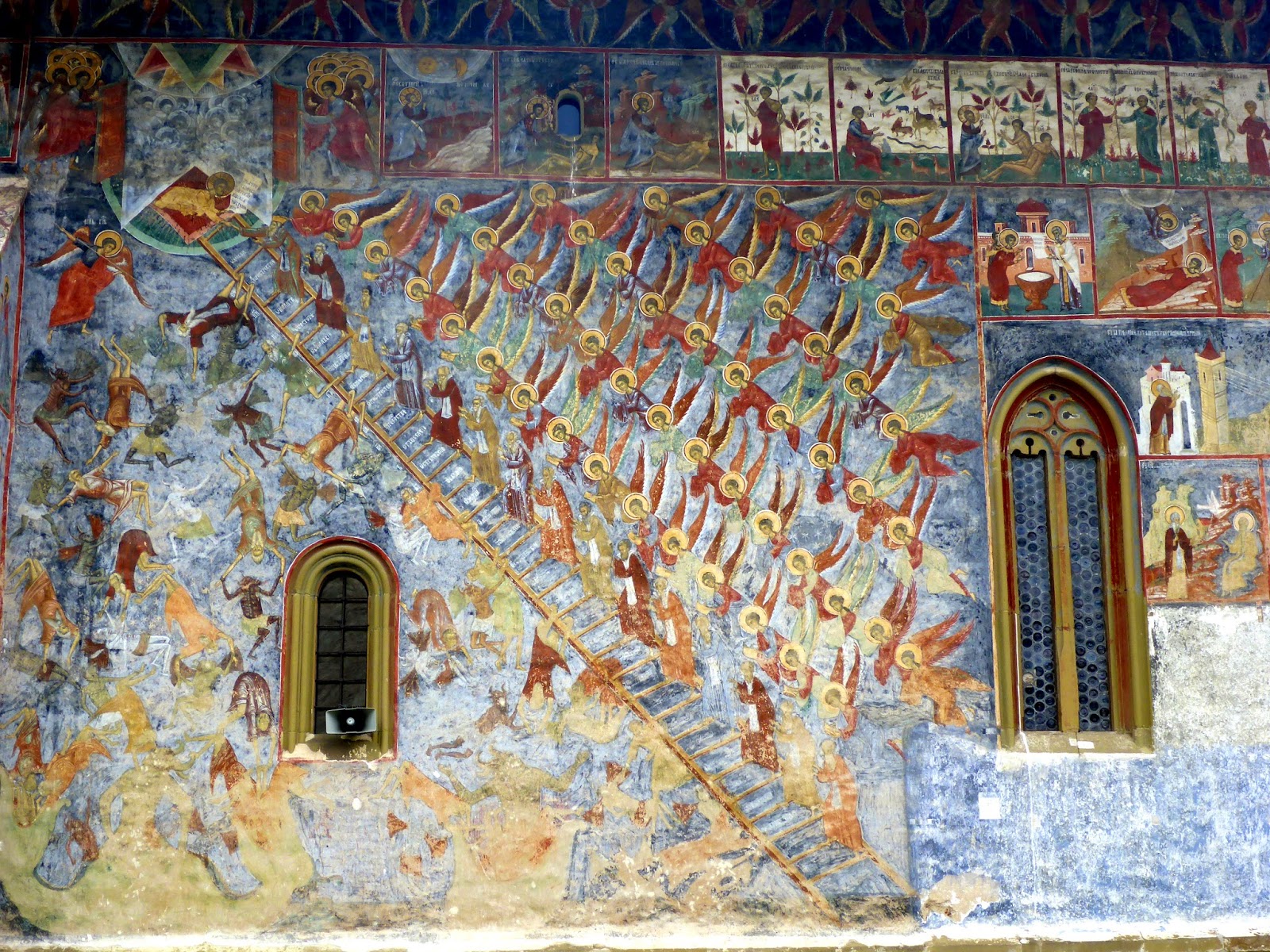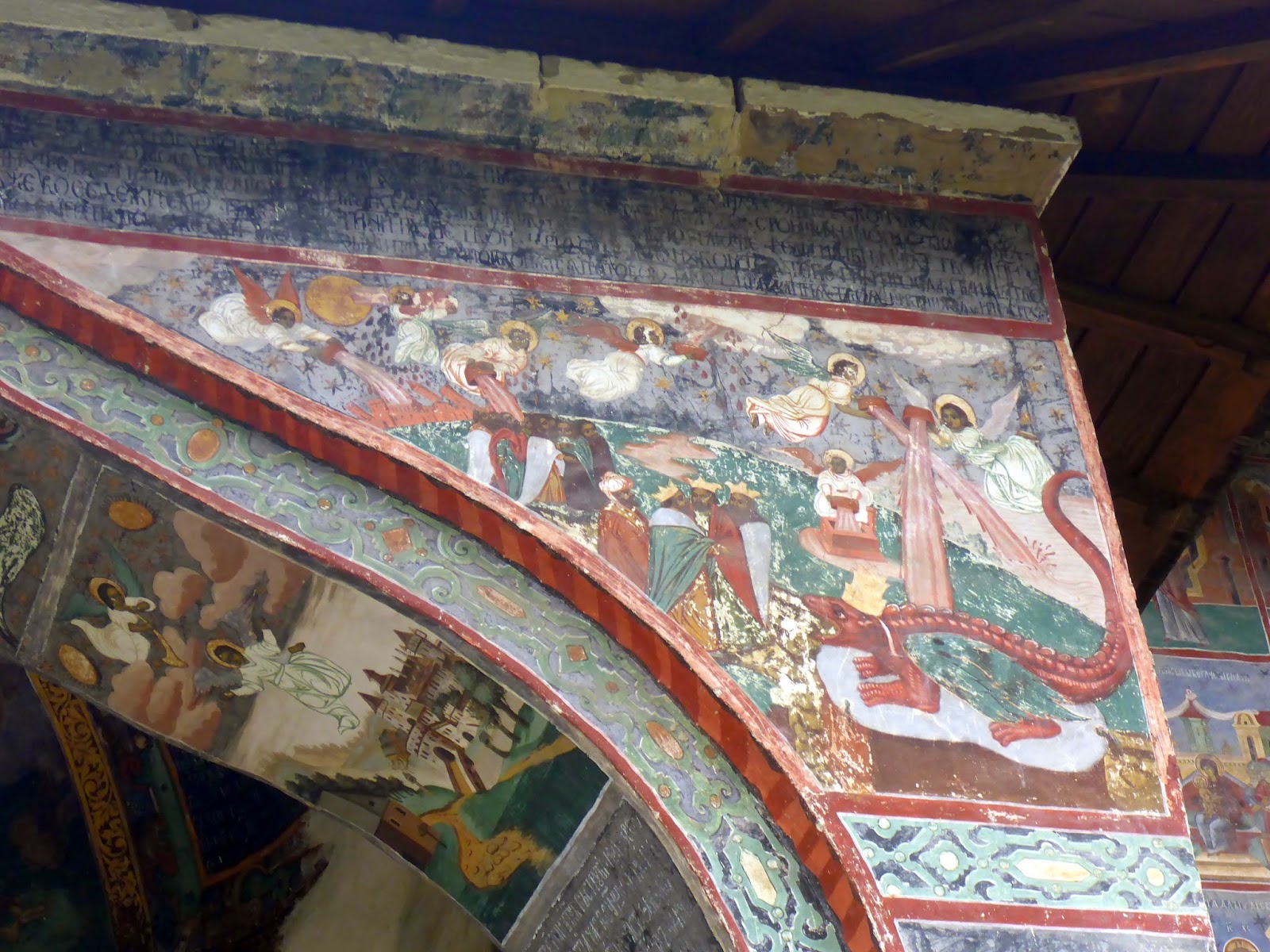On the third day of our trip, we spent the morning and afternoon at Putna Monastery. We were able to talk to a monk there for a long time (about 3 hours!) about what it means to be a Christian and church history. He even invited us to have lunch at the monastery. We ate fish soup, fried fish, mashed potatoes, salad, and bread, all homemade from ingredients from the monastery grounds. It was really cool to see where and what the monks eat. After leaving Putna, we visited Arbore Monastery, but the church was locked and there was no one around, so we were only able to see the outside. Jessica drove from Arbore to the city of Suceava - her first time ever driving in Romania! That evening, we ate dinner at and toured the Suceava Citadel.
On the fourth day, we visited Dragomirna Monastery. Dragomirna has the tallest church building of all the monasteries and is incredibly quiet and peaceful.
 |
| Welcome to Putna |
 |
| The entrance to Putna Monastery |
 |
| Inside Putna Monastery |
 |
| A statue of Mircea Eliade, a famous Romanian poet, who called Putna the "Jerusalem of the Romanian people" |
 |
| An image of people being cast into hell |
 |
| A similar image to other monasteries, but this scale under the Holy Spirit has "Faptele Bune" (Good Works) on one side and "Faptele Rele" (Bad Works) on the other side. This was really interesting, because the monk we talked to told us that salvation is not by works, but by grace through faith. Then he added that we also need tradition and the saints. |
 |
| An image of Noah and his family sacrificing to God after the flood |
 |
| A really cool image of Eve being taken out of Adam's rib (bottom right hand corner). If you click on the image, you should be able to see it better. |
 |
| The tomb of Stefan cel Mare is inside the church at Putna |
 |
| An image next to Stefan cel Mare's tomb of him offering the church to Jesus |
 |
| Another view of the church at Putna |
 |
| From behind the monastery, you can see written "Stefan" on the hillside. Legend says that Stefan cel Mare shot an arrow from the top of this hill to determine where the altar of the church would be built. |
 |
| A close-up |
 |
| We saw a lot of storks along the road. |
 |
| Arbore Monastery |
 |
| Cameron looking at the church at Arbore |
 |
| The side away from the road at Arbore is better preserved. |
 |
| Another really cool image of Eve being created out of Adam's rib |
 |
| Jessica at the entrance to Arbore |
 |
| The cemetery across from Arbore. You can also see the style of gates in the Bucovina region. |
 |
| Jessica driving for the first time in Romania! She drove for about 45 minutes, through several villages and into the city of Suceava. |
 |
| A view of Suceava from our hotel |
 |
| We had dinner (mici) at the Suceava Citadel. |
 |
| Suceava Citadel |
 |
| Cameron inside the Suceava Citadel |
 |
| It was so beautiful to watch the sunset from the citadel. |
Day 4: Dragomirna
 |
| Dragomirna Monastery |
 |
| The entrance to Dragomirna |
 |
| The courtyard - it was so peaceful. |
 |
| The entrance to the church. It was really interesting that the first two rooms inside the church were not painted (the walls were white), but the third room with the altar was painted. |
 |
| Beautiful flowers in the courtyard |
 |
| Dragomirna has the tallest church of the monasteries. |








































































